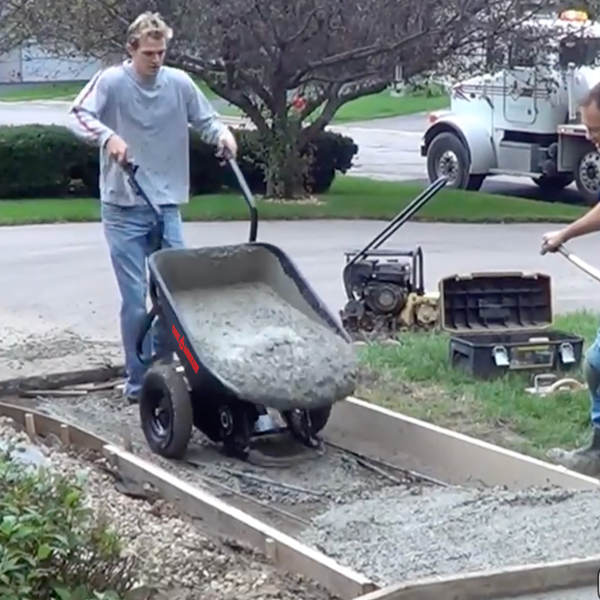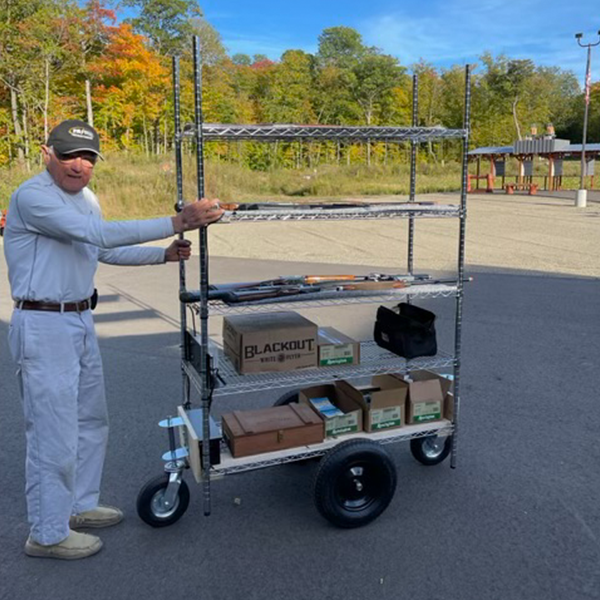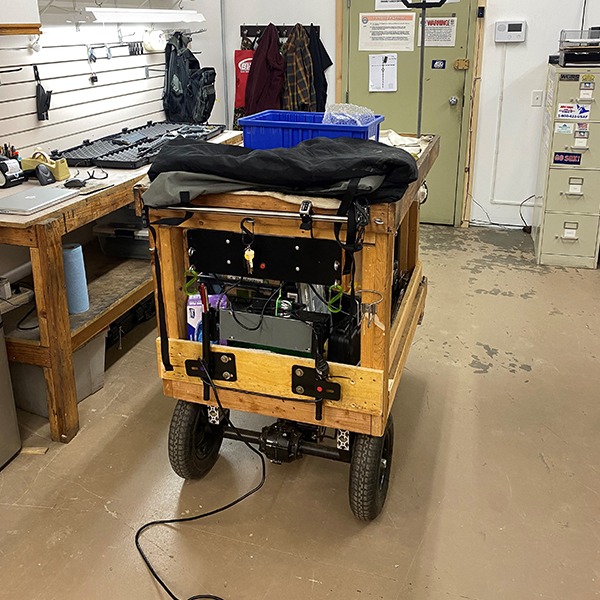
The history of the wheelbarrow dates to ancient China around 118 AD during the Han Dynasty. The original design was a simple wooden cart with a single wheel in the center and two handles at the opposite end, allowing a person to easily transport heavy loads. The wheelbarrow quickly became a valuable tool for construction, agricultural and various tasks.
Evolution of the wheelbarrow
1) Ancient China (118 AD): The earliest wheelbarrows were developed in China and were used primarily for agricultural purposes. They were simple in design but proved to be highly efficient for carrying heavy loads with less effort.
2) Spread to Europe: The wheelbarrow concept eventually spread to Europe. Where it underwent various modifications. In Europe, the wheelbarrow gained popularity for construction as well as transportation of goods.
3) Improvements in design: Over the centuries, the wheelbarrow underwent numerous design improvements, wheels became larger and sturdier, handles were adjusted for better control, and materials evolved from wood to metal.
4) Industrial Revolution: The Industrial Revolution in the 18th and 19th centuries brought further advancements. With the introduction of iron and steel components. This made wheelbarrows more durable and capable of handling heavier loads. Mass production in the post WWII era brought the consumer price down and plastic and polycarbonate quickly multiplied options.
5) Modern Innovations: In the late 20th century engines were added to the wheelbarrow and nick named gas buggies. This innovation increased load capacity and power while making the wheelbarrow cumbersome and heavy. In 2008 the first electric Power Assist Wheelbarrow (PAW) was introduced to the North American market. This innovation changed the game by supplying immediate power to move loads and increased stability.
6) Chore Warrior 2023: Rebranded from the (PAW) in 2023, Chore Warrior Electric wheelbarrow represents a contemporary advancement in wheelbarrow technology. The Chore Warrior Electric wheelbarrow. Has significant advantages and is the pinnacle of the evolution of the wheelbarrow. This clean, energy heavy duty tool. Incorporates power assistance. Having an electric rechargeable motor that assists in moving heavy loads, reducing the physical effort required by the user. Variable speed control allows the users to adjust the speed based on the terrain or load requirements.

When Sandy doesn’t want to bother her spouse when he’s just put his feet up and cracked a beer, she calls on her Chore Warrior. It pitches right in to move dirt, branches and debris up their front yard hill and around the house. Her husband loves Chore Warrior too. He plans to get her another one soon.

Madeline loves her independence. But now and then, she needs help with the heavy lifting. So the 85-year-old uses her Chore Warrior wheelbarrow to bring firewood to her Northern California home. When you’re dealing with floods, fires and drought, it’s nice to have powerful friend to help get things done.

As an astronomy hobbyist, I’ve built several of my own telescopes over the past 20 years. This scope weighs about 140 lbs. and (when folded) is pushed like a wheelbarrow up a couple of car ramps into my vehicle for transport to a dark sight. So, I’ve been looking for a way to add some power assist when pushing it up the ramps. I came across your videos for the PAW Chore Warrior and thought it looked like a perfect match for my needs.

Gary Lovrine loves using his Chore Warrior wheelbarrow and his kids have fun doing their chores. Cleaning horse stalls is a daily task and navigating up and down hills is way easier with push-button power. Hauling long distances is no big deal and the large tub capacity means less loads, with the motor bearing the brunt of the work. And the battery keeps its charge for hours and recharges quickly. Gary’s kids seem to recharge quickly too.

Ben added a blade to his Chore Warrior and it has helped him keep his walks clear ever since.

Bernie endorses the Chore Warrior because the stable platform eliminates spillage and the drive system does all the work.

Jack Barrett chops, hauls and splits and wood on a small island in northern Minnesota. It’s the only fuel source for heating his often-snowbound cabin. Besides wood, he uses his Chore Warrior wheelbarrow for rocks, groceries and to resupply a heavy, eight-gallon water tank. His Chore Warrior gobbles up and spits out whatever he fills it with–and comes back for more. And he loves that the battery lasts up to 10 hours on a single charge. So do his back muscles.

Doug loves flying planes and is part of the The Commemorative Air Force. More than once, he’s hurt his back pushing a plane in and out of a hanger. His modified Chore Warrior gave him wings, by moving planes in a safer, faster and more controllable fashion.

Jeff owns and runs a gun range in northern Minnesota. He needed a better way to move his weapons and ammunition up and down hills, and hundreds of yards across the range. The tireless drive system on the Chore Warrior was the perfect solution. Now he has the power and mobility to make his tasks easier.

The Miracle of Birth barn at the Minnesota State Fair needed a helping hand. So Chore Warrior donated a wheelbarrow to help the 4-H kids haul hay and feed, pile after pile, for miles and miles. Now we’re speculating about the Chore Warrior’s capacity for mini-donuts and corn dogs.

Henry age 7 moves a heavy load of beach gear from the parking lot over the sand with only the help of the Chore Warrior.

Joy and Bob Gamache are horse lovers with a small stable. They saddle up their Chore Warrior every day to carry supplies and pick up paddocks, in all kinds of weather conditions. It’s an indispensable tool that makes managing their farm so much easier.

In spring, Ben and his Chore Warrior collect sap from 120 tapped trees in a suburban Maine neighborhood for maple syrup production. Each collection run is nearly a half mile, and when full, the 35-gallon tank weighs nearly 300 lbs. The Chore Warrior’s upgraded tires give Ben great traction through mud and spring snow.

The gunsmith at the Saxonville armory needed to bring his precision tools and test weapons to the gun range to test repairs and modifications. The Chore Warrior drive system was the perfect solution to his problem.